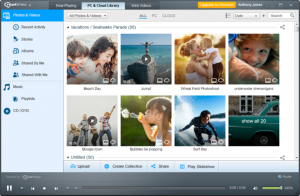

- REALTIMES UNINSTALL INSTALL
- REALTIMES UNINSTALL UPGRADE
- REALTIMES UNINSTALL LICENSE
- REALTIMES UNINSTALL WINDOWS 7
- REALTIMES UNINSTALL DOWNLOAD
Upgrade to a newer version of RTMT, Cisco recommends that you uninstallĬomputer that is running the Microsoft Windows operating system, click theĭownload link for the Cisco Unified Real-TimeĬomputer that is running the Linux operating system, click the Items in Unified RTMT after you upgrade the tool. The system saves user-created profiles in the database, so you can access these User preferences and downloaded module jar files locally on the client machine. To ensure compatibility, Cisco recommends that you upgrade RTMT after you complete the upgrade on all servers in the cluster. If you do not want to use theīrowse and navigate to a different location.
REALTIMES UNINSTALL INSTALL
Location where you want to install Unified RTMT. Your system (java.exe from the JRE installed directory, that is latest versionġ.8) as prompted in the installation screen of Unified RTMT.
REALTIMES UNINSTALL LICENSE
Unified RTMT welcome window appears, clickĪccept the terms of the license agreement then, clickĬhoose the absolute path of Java Virtual Machine executable from Is case sensitive: chmod +x CcmServRtmtPlugin.bin.

To install the Linux version, ensure that the file has execute privileges for example, enter the following command, which Or locate the directory where you downloaded the file and run the Unified RTMT Windows version, double-click the Unified RTMT icon that appears on the desktop
REALTIMES UNINSTALL WINDOWS 7
Install Unified RTMT on Windows 7 or later, ensure that you perform theĮxecutable to the preferred location on your client. Unified RTMT on a client that is running the Linux operating system, click the Unified RTMT on a client that is running the Microsoft Windows operatingĭownload link for the Real-Time Monitoring Tool. Unified Communications Manager IM and Presence Serviceįrom Unified Communications Manager IM and Presence Administration, choose Application > Plugins.įrom Cisco Unity Connection Administration, choose System Settings > Plugins. Plug-ins window of the administration interface forįrom Unified Communications Manager Administration, choose Application > Plugins. The current Unified RTMT requires JRE to run. These privileges logs into Unified RTMT, some of the features such as CallĬontrol Discovery (CCD) and Service Advertisement Framework (SAF) will not work Privileges have access to Unified RTMT features. The last instance of Unified RTMT that you run.Īdministrators with Standard Audit Users and Standard CCM Super Users User preferences, such as the IP address and Unified RTMT frame size, based on
REALTIMES UNINSTALL DOWNLOAD
That you want to monitor, the system prompts you to download the compatible version. If the Unified RTMT version that you are using is not compatible with the server With the product that you are monitoring. Verify that the Unified RTMT version that you install is compatible (one version per Unified Communications Manager release). Releases of Unified Communications Manager may require different versions of Unified RTMT to be installed on your computer

Requires at least 300 MB of disk space to run on a Windows/Linux OS platform. $logname = (Join-Path $log_directory "$ProductName_uninstall.Requires at least 128 MB in memory to run on a Windows OS platform the tool If (!::IsNullOrEmpty($localPackage) -and (Test-Path $localPackage)) $localPackage = $regkey.GetValue("LocalPackage") $regkey = ::LocalMachine.OpenSubKey("$productsKeyName\$found\InstallProperties") Return "First search could not find $ProductName" I think I have a way that works with or without double-quotes for non-msi installs: $uninstall = get-package whatever | % Or $uninstall = get-package 'Citrix Workspace 2202' | Maybe in this case just run it: & "C:\Program Files (x86)\Citrix\Citrix WorkSpace 2202\TrolleyExpress.exe" /uninstall /cleanup /silent $prog,$myargs = -split (get-package 'Remote Support Jump Client *' | You may have to add a '/S' or something for silent install at the end. If it's not an msi install, but a programs install, it takes a little more string mangling. Sometimes, annoyingly, it prompts to install nuget first: install-packageprovider nuget -force uninstall-package 'Citrix HDX RealTime Media Engine 2.9.400' Uninstall-package doesn't take wildcards. If you know the exact name, this should work. get-package *software* | uninstall-package


 0 kommentar(er)
0 kommentar(er)
